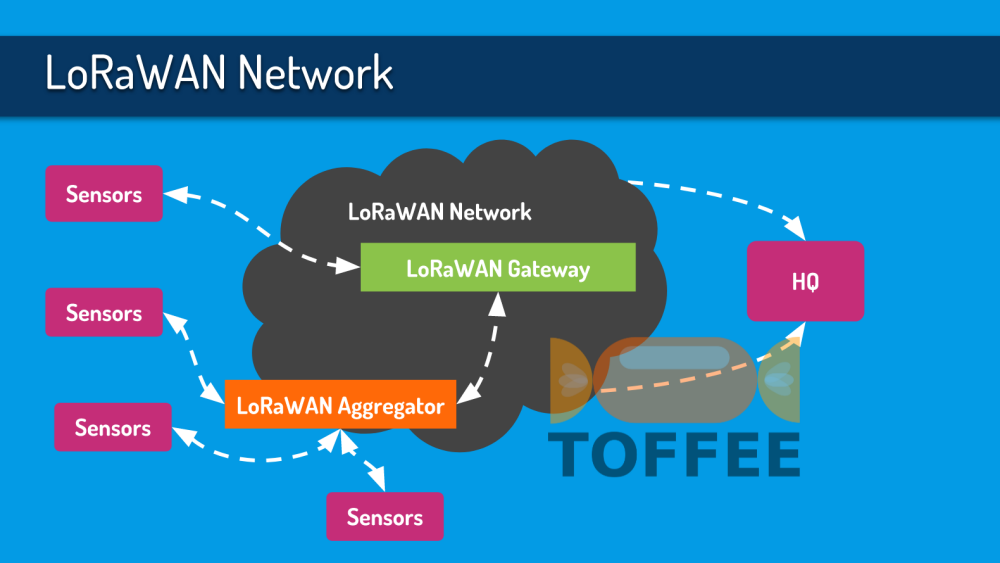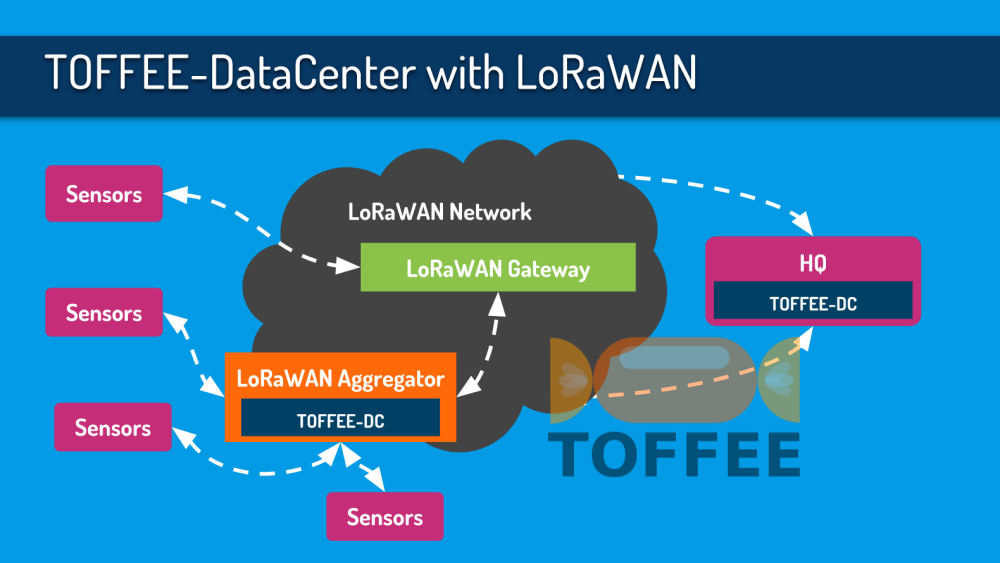DOCUMENTATION 》 LoRaWAN - Network Optimization via TOFFEE WAN Optimization
LoRaWAN - Network Optimization:
LoRaWAN is a very promising technology where it allows us to establish long range networks making it suitable for IoT and other such applications. With
LoRaWAN now it is possible to collect data metric/analytics from the sensors scattered across a large area (typically many miles 5-10 Kms or a bit more).
The only drawback of LoRa is that although it provides long range its network data rate is far too low. In a way that is sufficient for IoT or such sensor
based data, but it is way too less (almost impractical) for any effective communication channel (such as internet browsing, etc).
The speed you get is around 1kbps to 2.5kbps depending upon the range, signal strength and so on.
So here is a scenario where few sensors are attached to a LoRaWAN Network. Let us assume in this case few of these sensors are not themselves LoRa capable,
hence they are connected to an intermediate LoRaWAN Aggregator. This in turn connected backend to a LoRaWAN Gateway through which it gets internet connectivity.

We can now improve its performance by incorporating TOFFEE-DataCenter within this hardware infrastructure. Thus improving its total overall network bandwidth. We can now squeeze a lot more data through this long-range network channel than it is possible earlier with LoRaWAN Technology (hardware) alone.

Learn more about LoRaWAN and LoRaWAN based hardware:
Wiki: LoRa - https://en.wikipedia.org/wiki/LoRa#LoRaWAN
LoRa Alliance - https://lora-alliance.org
LoRa Alliance - About - https://lora-alliance.org/about-lorawan
LoRaWAN Overview - https://www.thethingsnetwork.org/docs/lorawan
De la technologie LoRa au réseau LoRaWAN - http://www.frugalprototype.com/technologie-lor ...
Mbed OS - Arm Mbed OS provides a native network stack for LoRaWAN - https://os.mbed.com/docs/latest/reference/lora ...
Building your own private LoRa network - https://docs.mbed.com/docs/lora-with-mbed/en/l ...
LoRa Gateways and Concentrators - https://loriot.io/lora-gateways.html
MatchX - LoRa Hardware - https://matchx.io/hardware
Green House LoRaWAN Experiment - https://www.green-house.co.jp/en/pdt/lorawan-n ...
Suggested Topics:
TOFFEE - WAN Optimization
Categories
| 💎 TOFFEE-MOCHA new bootable ISO: | Download |
| 💎 TOFFEE Data-Center Big picture and Overview: | Download PDF |
![]()
Saturday' 13-Mar-2021

Saturday' 13-Mar-2021
Saturday' 13-Mar-2021
Featured Educational Video:

Saturday' 13-Mar-2021
Research :: Optimization of network data (WAN Optimization) at various levels:

Learn Linux Systems Software and Kernel Programming:
![Linux, Kernel, Networking and Systems-Software online classes [CDN] Linux, Kernel, Networking and Systems-Software online classes [CDN]](http://sareesaremypassion.org/cdn/the-toffee-project/i/the_linux_channel_banner2.jpg)
Hardware Compression and Decompression Accelerator Cards:

TOFFEE-DataCenter on a Dell Server - Intel Xeon E5645 CPU:





